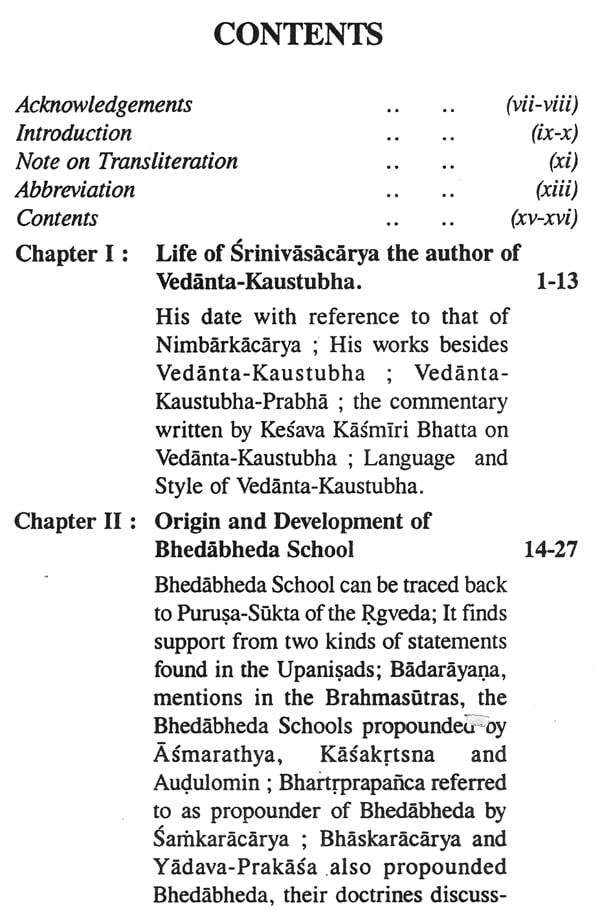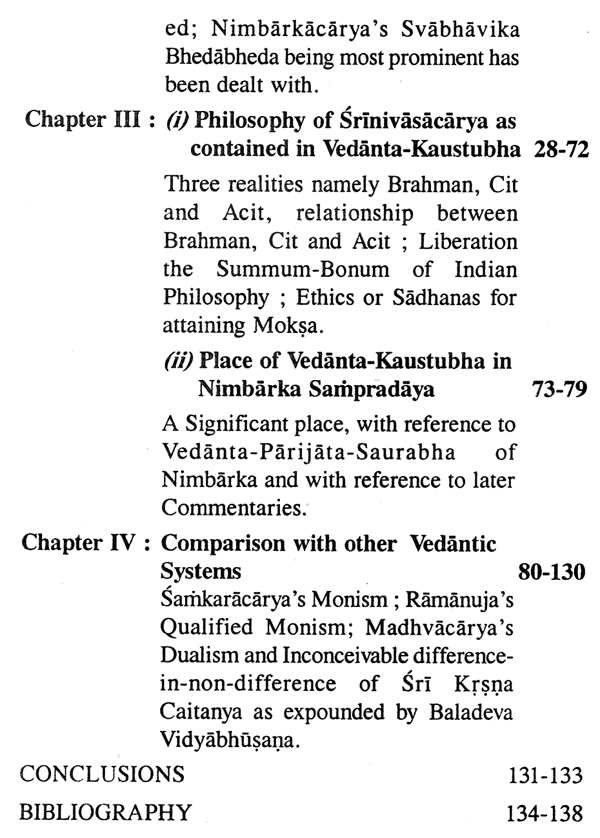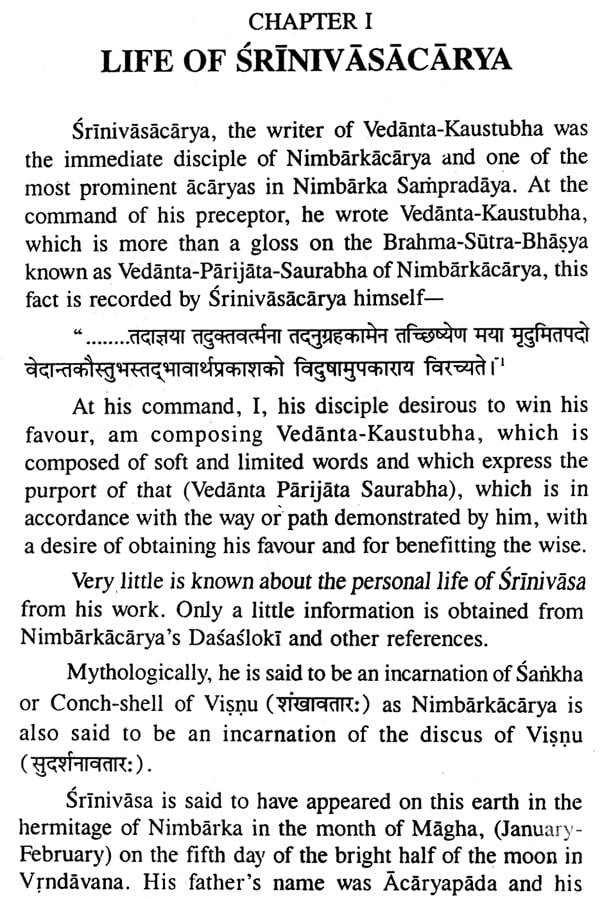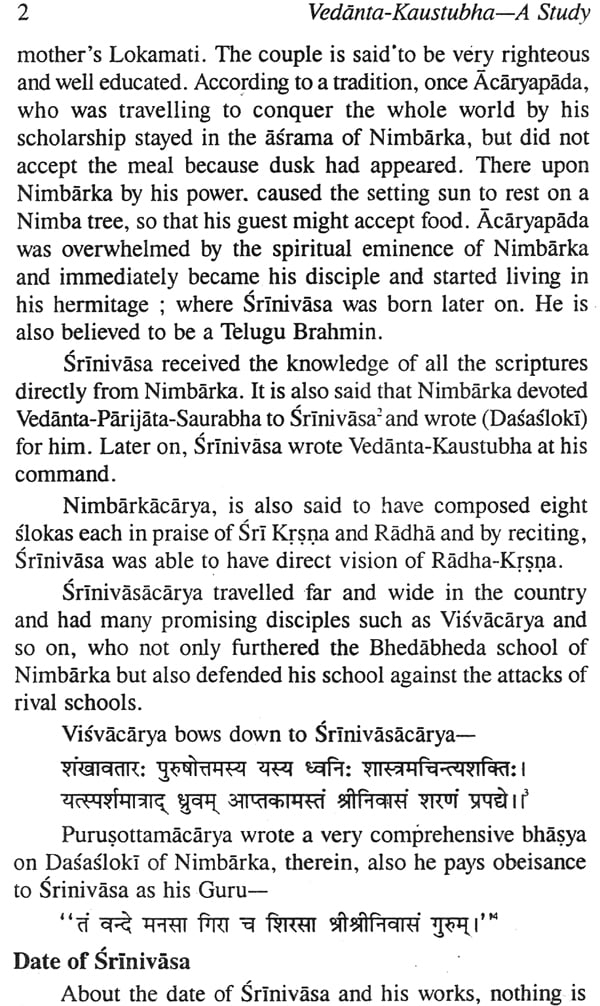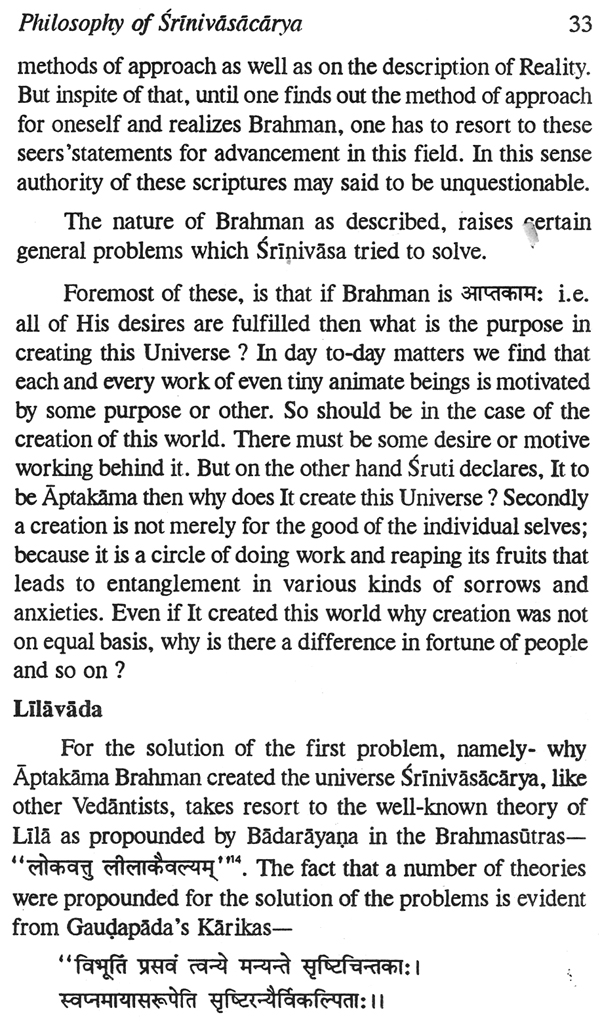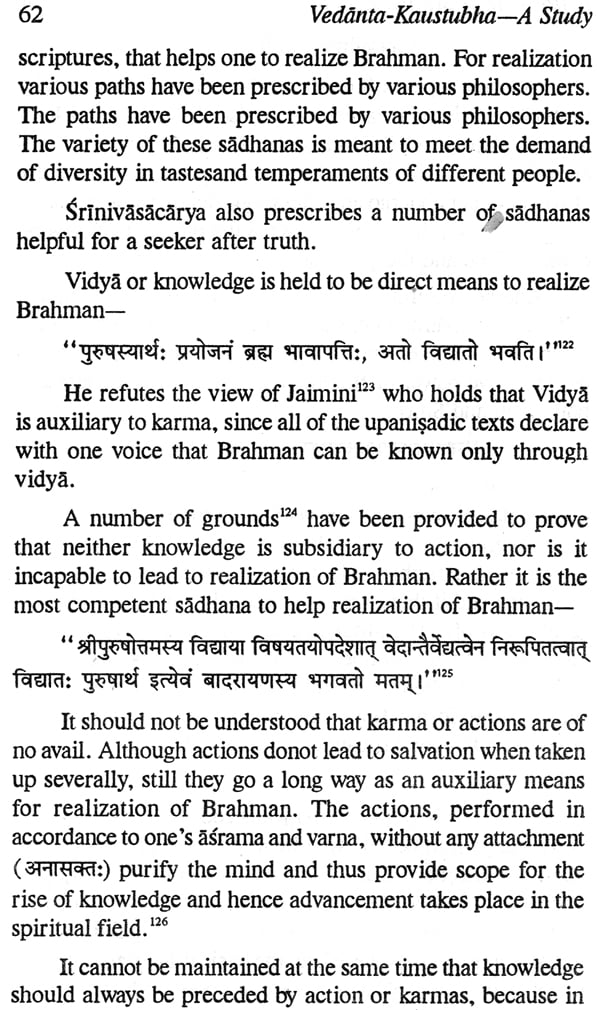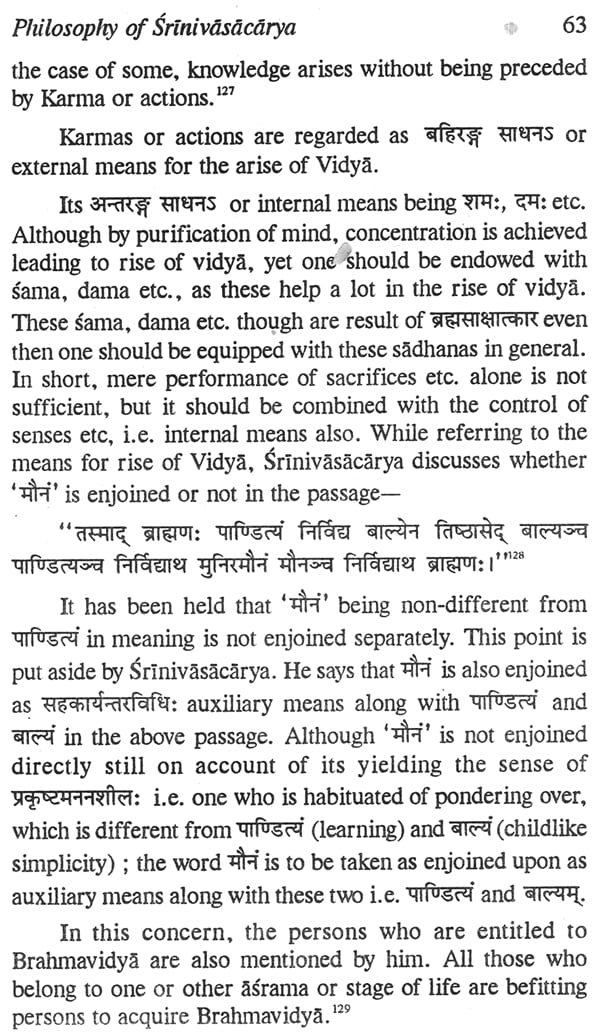
The Vedanta Kaustubha
Book Specification
| Item Code: | NAU575 |
| Author: | Dr. Tripta Gupta |
| Publisher: | Sanjay Prakashan |
| Language: | English |
| Edition: | 2000 |
| ISBN: | 8174530436 |
| Pages: | 147 |
| Cover: | HARDCOVER |
| Other Details | 8.50 X 5.50 inch |
| Weight | 440 gm |
Book Description
Vedanta Philosophy, in India, has become almost synonymus with Sarfikara Vedanta. Consequently, a great deal has been written and said regarding Momism of Sariikaracarya. But much is not known about Svabhavika Bhedabheda of Nimbarkacarya who flourished during the 12th century at Vrndavana. Nimbarkacarya wrote Vedanta-Parijata-Saurabha a commentary on Brahmasatras to propound his doctrine and Srinivasa, his disciple and successor wrote Vedanta-Kaustubha to explain the purport of Nimbarka's brief commentary. Therefore Vedanta-Kaustubha contains not only the explanations of sutras in details but also elucidates those vital points of this school which were left unexplained by Nimbarka. The three realities accepted are Brahman, Cit i.e. individual soul and Acit i.e. insentient being. The system is named as Svabhavika-Bhedabheda because the relation between Brahman and Cit and that between Brahman and Acit is different as well as non-different (bhedabheda). Cit being part of aitga of Brahman is different as well as non-different from Brahman and the relation is same as that between tree and its leaves, sea and its waves. This bhedabheda relation is svabhavika or natural and that is the reason` the system is being called as Svabhavika-Bhedabheda Vada. Same relation exists even between Brahman and Acit. Acit is different from Brahman, being its effect, but at the same time being non-different from Him, being dependent on Him for its existence. The present book deals with this Svabhavika-Bhedabheda of Nimbarka as explained by Vedanta-Kaustubha of Srinivasa. P>
Dr. Tripta Gupta, born is 1947, in a wealthy merchant family in Lahore. She completed her school from a Government school in Delhi with higher first division in 1963. B.A. Sanskrit (Hons.) in 1966 and M.A. (Sanskrit) in 1968 were completed from Indraprastha College with a fourth and third positions respectively in the Delhi University. Being interested in philosophy, she obtained a Ph.D. degree from Delhi University for her research on Vedanta-Kaustubha in 1971 and during this period she was awarded a scholarship of Rs. 250 per month from U.G.C. Ever since the completion of her doctorate she has been teaching in Gargi College, Delhi University.
Philosophy has been considered as the most useful area of quest in India. Among the six systems of Indian philosophy, Vedanta has been the most popular system in India. Among the various schools of Vedanta, the Nimbarka School of Vedanta, has not attracted the attention of a number of scholars, as that of Sankara, Ramanuja or Madhvacarya; consequently, much work has not been done in this field. Besides, the brief treatment of the Nimbarka School in the general books on Indian philosophy, only two or three works are—worth mentioning namely 'Doctrines of Nimbarka and his Followers' by Dr. Roma Bose and `Nimbarka School of Vedanta' by Umega Mika. But both deal with Nimbarka's philosophy in particular and that of his successors in general. None of the works has given due importance to Vedanta-Kaustubha of Srinivasa, the immediate disciple and successor of Nimbarka, and therefore it requires separate treatment, which I have tried to give in the present work ; pointing out clearly its position, merits, demerits etc. The first chapter deals with the personal life of reinivasacarya. I have tried to give, whatever, material I obtained about his birth, education and personal life. His date of birth with reference to that of Nimbarka has been fixed on the basis of internal as well as external Pramanas. The achievements of Srinivasa in philosophical field have also been dealt with. Vedanta-Kaustubha-Prabha, the only commentary available on Vedanta-Kaustubha has dealt with in brief. The second chapter traces the origin of bhedabheda school. Its origin has been traced right from the Rgveda itself and the stages of development have been discussed. It is to bring to your notice that the study is incomplete since our opinion is based on the limited amount of literature available there since the missing links could not be located due to the absence of treatises. , The third chapter takes into consideration the philosophy of Srinivasacarya, as contained in Vedanta-Kaustubha. Brahman, Cit and Acit, the three realities, and their mutual relation, leading to nomenclature of system as SvAbhavika-bhedabheda, has been dealt with exhaustively. His concept regarding moksa and its sadhanas or means of realization have also been dealt with in Vedanta-Kaustubha. In the Second Part of the chapter, position of Vedanta-Kaustubha in Nimbarka Sarnpradaya, has been assessed. The fourth chapter deals with the comparative study of philosophy contained in Vedanta-Kaustubha with that of Sankardcarya, Bhaskaracarya, Ramanujacarya, Madhvacarya, and Caitanya as presented by Baladeva Vidyabhiisatia. The concluding chapter is a summary of research work.
**Contents and Sample Pages**
